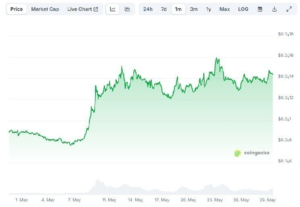Treasurys sold off on Friday after Federal Reserve Bank of New York President John Williams said that officials are not talking about cutting interest rates right now.
What’s happening
-
The yield on the 2-year Treasury
BX:TMUBMUSD02Y
rose less than 1 basis point to 4.405% from 4.397% on Thursday. The rate had fallen on Wednesday and Thursday by the most for a two-day period since March. -
The yield on the 10-year Treasury
BX:TMUBMUSD10Y
was up slightly at 3.931% versus 3.929% on Thursday. -
The yield on the 30-year Treasury
BX:TMUBMUSD30Y
was steady at 4.038% versus 4.052% on Thursday. - The 10- and 30-year rates each ended Thursday’s session at the lowest levels since late July 31.
What’s driving markets
In an interview with CNBC on Friday, New York Fed President John Williams said it is too early to discuss whether it’s time to cut borrowing costs and that “we aren’t really talking about cutting interest rates right now.” He also said rates are “at or near the right place” to get inflation under control and keep the economy growing.
Treasurys sold off on the comments by Williams, after having rallied over the prior two sessions on Fed officials’ projections for three rate cuts in 2024.
Read: History shows even the Fed can’t really predict what it does with interest rates a year out
Markets are pricing in an 85.5% probability that the Fed will leave its benchmark interest rate unchanged again in January, according to the CME FedWatch Tool. The chance of at least a 25-basis-point rate cut by its subsequent meeting in March is seen at 72.6%. And traders are mostly expecting five to seven quarter-point rate cuts by next December.
U.S. data released on Friday showed that the New York Empire State manufacturing survey for December sank to -14.5 and hit a four-month low, exacerbating worries about that sector.
In comparison to the Fed, the Bank of England and European Central Bank each left interest rates unchanged on Thursday, as the heads of those institutions each indicated it was too early to talk about interest rate cuts.
However, pressure on the ECB to cut rates may not be far behind into the new year as weak purchasing managers data from both Germany and France drove the yield on the 10-year German bund
BX:TMBMKDE-10Y
5.9 basis points lower to 2.057%.
What strategists are saying
“Treasuries bear-flattened on the Williams headlines and ignored the Empire Manufacturing index — and rightfully so given the fact the most relevant unknown at this point in the cycle is when the first cut occurs in 2024,” said BMO Capital Markets rates strategist Ian Lyngen.
Read the full article here









